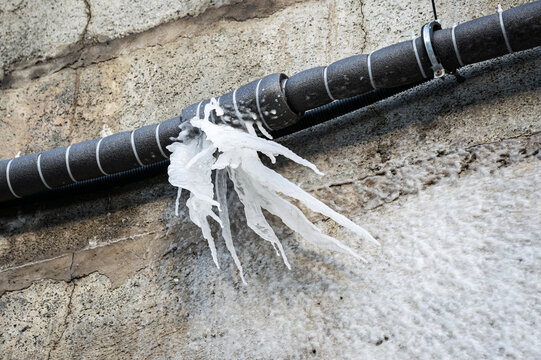Avoid Frozen Plumbing in Winter: Pro Strategies
Avoid Frozen Plumbing in Winter: Pro Strategies
Blog Article
What are your thoughts with regards to Helpful Tips to Prevent Frozen Pipes this Winter?

Cold weather can damage your pipes, especially by freezing pipes. Here's how to avoid it from occurring and what to do if it does.
Intro
As temperatures decrease, the threat of frozen pipes boosts, possibly leading to pricey repair work and water damages. Comprehending how to prevent icy pipes is essential for home owners in cold climates.
Comprehending Frozen Pipes
What triggers pipes to freeze?
Pipelines freeze when exposed to temperature levels below 32 ° F (0 ° C) for extended durations. As water inside the pipelines freezes, it increases, putting pressure on the pipeline wall surfaces and possibly causing them to burst.
Threats and damages
Frozen pipelines can result in water supply disruptions, building damage, and expensive fixings. Ruptured pipes can flood homes and trigger considerable architectural damage.
Signs of Frozen Pipes
Determining icy pipelines early can avoid them from breaking.
Exactly how to recognize icy pipes
Seek decreased water flow from taps, uncommon smells or sounds from pipelines, and noticeable frost on exposed pipelines.
Avoidance Tips
Insulating susceptible pipes
Wrap pipes in insulation sleeves or utilize heat tape to shield them from freezing temperature levels. Concentrate on pipelines in unheated or external areas of the home.
Heating techniques
Keep interior rooms adequately heated, especially locations with pipes. Open closet doors to enable cozy air to circulate around pipelines under sinks.
Protecting Exterior Plumbing
Yard hose pipes and outdoor faucets
Disconnect and drain pipes garden tubes before winter season. Set up frost-proof faucets or cover outside taps with protected caps.
What to Do If Your Pipes Freeze
Immediate activities to take
If you presume frozen pipelines, keep taps available to ease stress as the ice melts. Make use of a hairdryer or towels soaked in warm water to thaw pipes gradually.
Long-Term Solutions
Structural changes
Think about rerouting pipelines away from exterior walls or unheated locations. Add additional insulation to attic rooms, cellars, and crawl spaces.
Updating insulation
Invest in high-grade insulation for pipelines, attic rooms, and wall surfaces. Appropriate insulation aids keep regular temperature levels and minimizes the threat of frozen pipes.
Final thought
Preventing frozen pipelines calls for aggressive procedures and quick actions. By recognizing the reasons, signs, and safety nets, home owners can protect their plumbing during cold weather.
5 Ways to Prevent Frozen Pipes
Drain Outdoor Faucets and Disconnect Hoses
First, close the shut-off valve that controls the flow of water in the pipe to your outdoor faucet. Then, head outside to disconnect and drain your hose and open the outdoor faucet to allow the water to completely drain out of the line. Turn off the faucet when done. Finally, head back to the shut-off valve and drain the remaining water inside the pipe into a bucket or container. Additionally, if you have a home irrigation system, you should consider hiring an expert to clear the system of water each year.
Insulate Pipes
One of the best and most cost-effective methods for preventing frozen water pipes is to wrap your pipes with insulation. This is especially important for areas in your home that aren’t exposed to heat, such as an attic. We suggest using foam sleeves, which can typically be found at your local hardware store.
Keep Heat Running at 65
Your pipes are located inside your walls, and the temperature there is much colder than the rest of the house. To prevent your pipes from freezing, The Insurance Information Institute suggests that you keep your home heated to at least 65 degrees, even when traveling. You may want to invest in smart devices that can keep an eye on the temperature in your home while you’re away.
Leave Water Dripping
Moving water — even a small trickle — can prevent ice from forming inside your pipes. When freezing temps are imminent, start a drip of water from all faucets that serve exposed pipes. Leaving a few faucets running will also help relieve pressure inside the pipes and help prevent a rupture if the water inside freezes.
Open Cupboard Doors
Warm your kitchen and bathroom pipes by opening cupboards and vanities. You should also leave your interior doors ajar to help warm air circulate evenly throughout your home.

I'm certainly very curious about Helpful Tips to Prevent Frozen Pipes this Winter and I am praying you enjoyed the article. In case you liked our blog posting plz don't forget to pass it around. I praise you for being here. Kindly visit our site back soon.
Go Deal Now Report this page